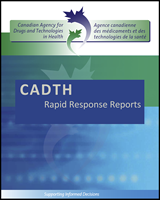Oral antibiotics are often used prophylactically in patients undergoing invasive dental procedures, with the aim of preventing oral bacteria from entering the bloodstream, and causing serious complications due to infection among susceptible patients.
Patients with prosthetic joints have historically been prescribed antibiotics prior to dental procedures. A 2014 survey found that 71% of Canadian dentists and 77% of orthopedic surgeons routinely prescribed prophylactic antibiotics for patients with total join arthroplasty prior to dental procedures. While this practice has been commonplace, it has been carried out with little supporting clinical evidence. Individuals who have undergone total joint replacement are considered to be at a generally higher risk of developing infection. Given the frequency with which dental procedures are performed, the potential for antimicrobial resistance, and potential cost, clinical effectiveness should be demonstrated.
The present review was conducted as an update to a 2013 CADTH Rapid Response report on the same topic. The 2013 report identified one guideline that recommended practitioners could consider ceasing the routine use of antibiotics prior to dental procedures for patients with prosthetic joints. This review will seek to identify any recently published clinical evidence for the prophylactic use of oral antibiotics during dental procedures in patients with orthopedic implants and to review current evidence-based guideline recommendations for this patient group.
Disclaimer: The Rapid Response Service is an information service for those involved in planning and providing health care in Canada. Rapid responses are based on a limited literature search and are not comprehensive, systematic reviews. The intent is to provide a list of sources of the best evidence on the topic that CADTH could identify using all reasonable efforts within the time allowed. Rapid responses should be considered along with other types of information and health care considerations. The information included in this response is not intended to replace professional medical advice, nor should it be construed as a recommendation for or against the use of a particular health technology. Readers are also cautioned that a lack of good quality evidence does not necessarily mean a lack of effectiveness particularly in the case of new and emerging health technologies, for which little information can be found, but which may in future prove to be effective. While CADTH has taken care in the preparation of the report to ensure that its contents are accurate, complete and up to date, CADTH does not make any guarantee to that effect. CADTH is not liable for any loss or damages resulting from use of the information in the report.

